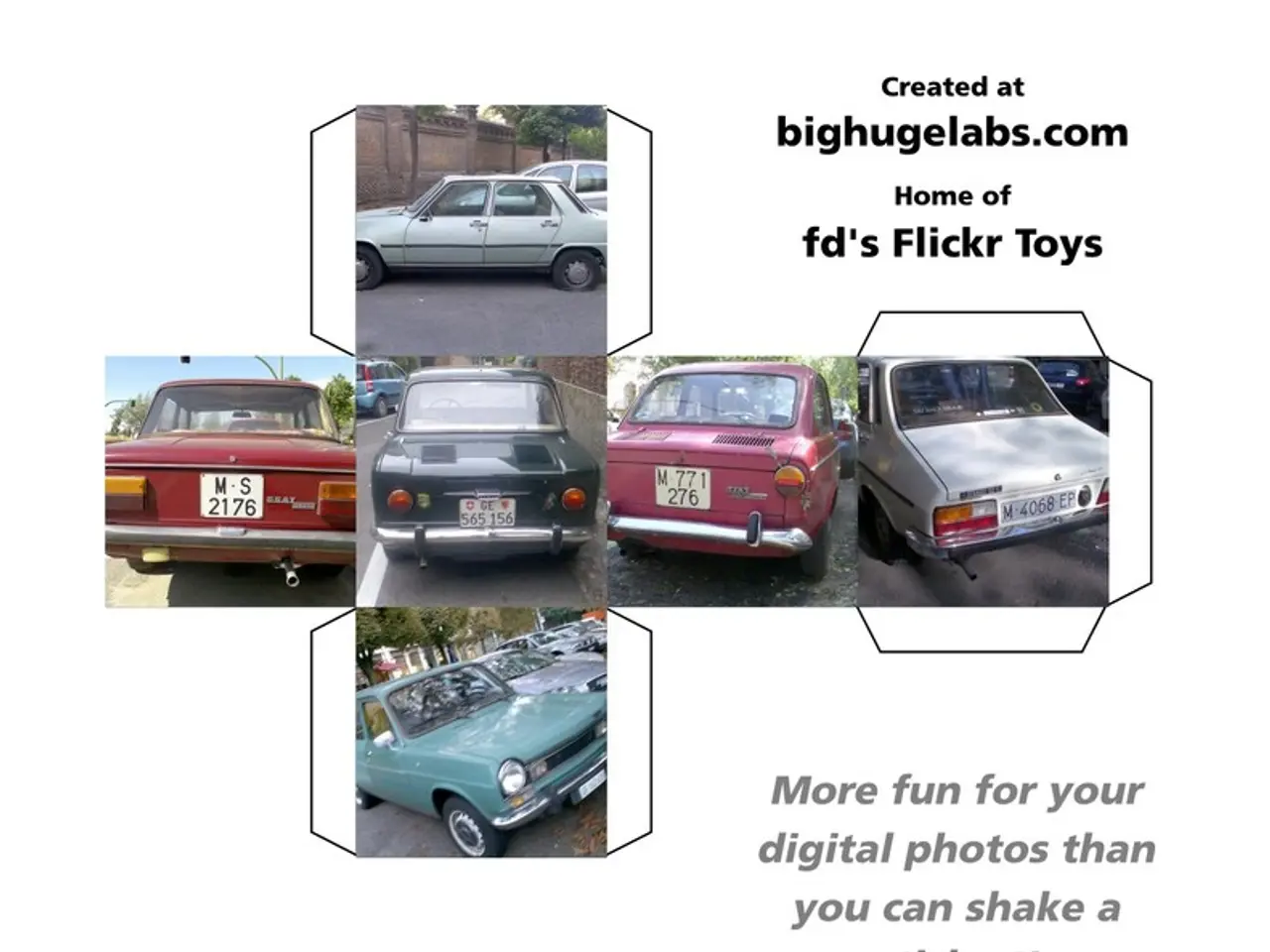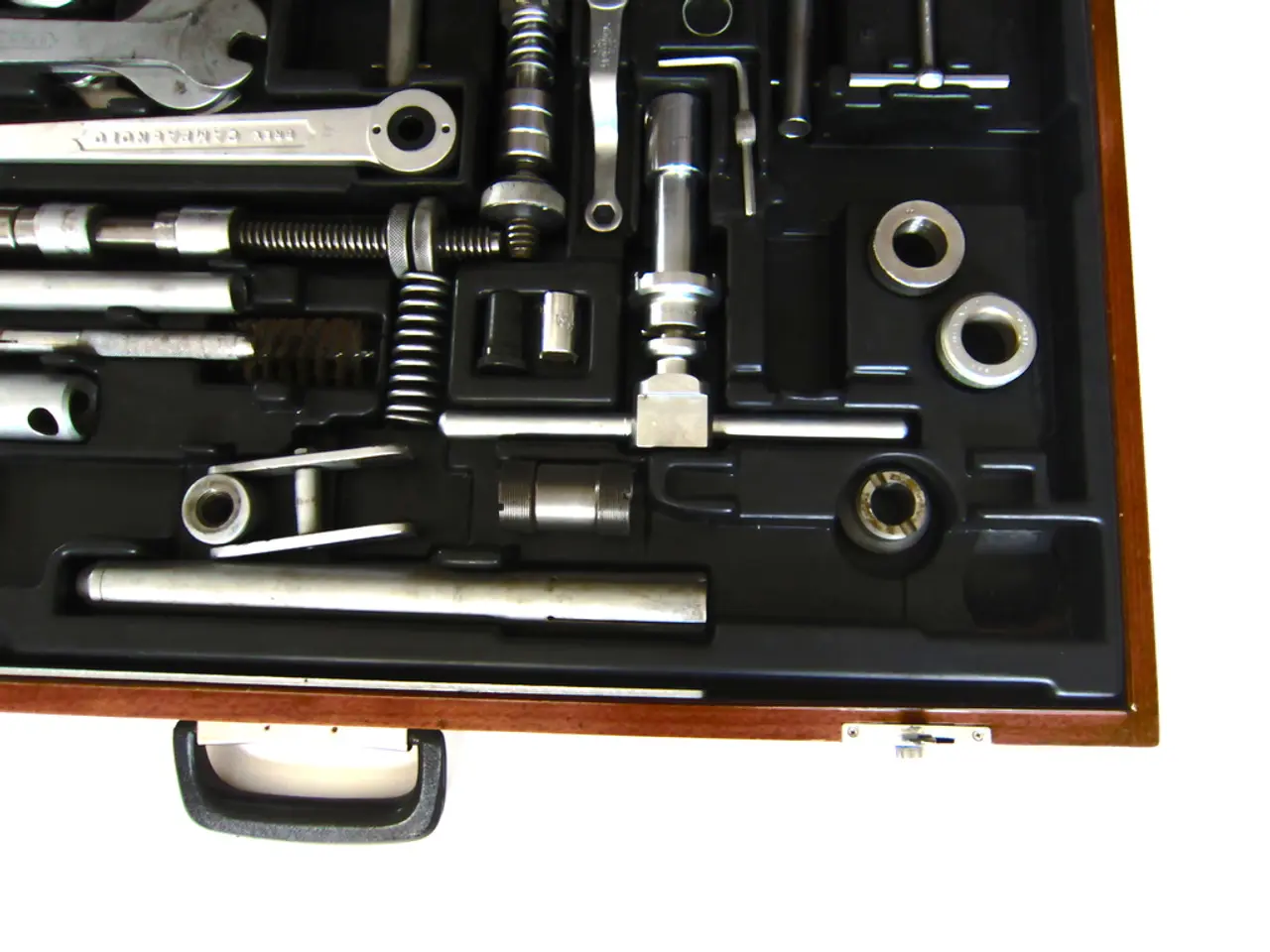Unveiling of our organization's design for the solar-electric passenger car, 'Sion', and solar bus kit for public transportation fleets is now public.
In the world of electric vehicles (EVs), the Sono Sion from Sono Group N.V. is making waves as the first affordable solar electric vehicle (SEV) to hit the scene. This innovative vehicle, currently undergoing testing in Munich, boasts an impressive design that integrates 456 solar cells directly into its body panels, providing up to 245 kilometers of additional range per week through solar energy alone[1].
The Sion represents a hybrid approach to solar mobility, combining a conventional battery system for primary power, integrated solar panels embedded into the vehicle's surface for supplementary charging, and standard EV charging capabilities for reliability and flexibility. This balanced design makes the Sion a practical solution for increasing daily driving range and reducing dependency on grid electricity[1].
Despite facing commercial challenges, the Sion's concept has proven influential in the industry. It demonstrates the potential for vehicles to partially self-power through solar energy, particularly in regions with strong sunlight[2]. The Sion is part of a growing trend of solar-assisted electric mobility, where solar cells supplement battery power and extend range, although they do not replace traditional charging entirely.
Advances in photovoltaic technologies, such as flexible perovskite solar cells, could further improve such vehicles' efficiency and integration in the future[1][2].
Meanwhile, Sono Group is also making strides in the public transportation sector with the Solar Bus Kit. This innovative technology allows subsystems like the HVAC to be partially powered by renewable energy, saving fuel, CO2, and costs. Bus fleet operators may see a potential payback time of approximately 3-4 years, depending on days in operation and fuel prices[3].
The Solar Bus Kit is designed for common 12-meter public transport bus types on the European market, including Mercedes-Benz Citaro and MAN Lion's City. Sono Group is collaborating with Munich's public transport company to support the city's clean air targets, demonstrating the potential of this technology for the transport sector[4].
The Sion, unveiled at Sono Group's first "Celebrate the Sun" Community Event, boasts a more spacious, cleaner interior with more storage, newly designed front seats and rear bench, and a new steering wheel[5]. The exterior has fewer lines and clearer surfaces, with new headlights and rear lights, a new bottom sideline design, new door handles, a streamlined rear with new camera and 3D lines, and a new charging lid[6].
The Sion is expected to have one of the lowest total cost of ownership (TCOs) in the medium-size segment due to its proprietary solar technology[7]. Jona Christians, co-founder and CEO of Sono Group, stated that the Solar Bus Kit will push the mission of making every vehicle a solar vehicle to the next level[8].
Sono Group is partnering with 19 companies worldwide to implement its Sono Solar Technology on a variety of vehicle architectures such as buses, trailers, trucks, and electric transporters[9]. The energy generated by the solar cells is expected to extend the estimated 305 km range of the Sion's 54 kWh LFP battery by an average of 112 km (up to 245 km) per week[1].
The Solar Bus Kit is part of Sono Group's plan to diversify its business and has been delivered to several B2B customers[10]. The Sion is in its production design, with major enhancements compared to earlier concepts[11]. The Solar Bus Kit represents a milestone on our path toward a world without fossil fuels[12].
[1] Sono Motors. (2021). Sono Sion. Retrieved from https://sonomotors.com/en/sion/ [2] Sono Motors. (2021). The Sono Sion is the world's first affordable solar electric vehicle. Retrieved from https://sonomotors.com/en/sion/ [3] Sono Motors. (2021). Solar Bus Kit. Retrieved from https://sonomotors.com/en/solar-bus-kit/ [4] Sono Motors. (2021). Partnership with Munich's public transport company. Retrieved from https://sonomotors.com/en/news/ [5] Sono Motors. (2021). Sono Sion's interior. Retrieved from https://sonomotors.com/en/sion/ [6] Sono Motors. (2021). Sono Sion's exterior. Retrieved from https://sonomotors.com/en/sion/ [7] Sono Motors. (2021). Sono Sion's total cost of ownership. Retrieved from https://sonomotors.com/en/sion/ [8] Sono Motors. (2021). Jona Christians on the Solar Bus Kit. Retrieved from https://sonomotors.com/en/news/ [9] Sono Motors. (2021). Global partnerships for Sono Solar Technology. Retrieved from https://sonomotors.com/en/news/ [10] Sono Motors. (2021). Deliveries of the Solar Bus Kit. Retrieved from https://sonomotors.com/en/news/ [11] Sono Motors. (2021). Sion in production design. Retrieved from https://sonomotors.com/en/news/ [12] Sono Motors. (2021). The Solar Bus Kit and a world without fossil fuels. Retrieved from https://sonomotors.com/en/news/
The Sion's innovative design, integrating solar panels and traditional battery power, could revolutionize environmental-science by reducing dependency on grid electricity and promoting renewable energy, particularly in finance and business sectors. The integration of flexible perovskite solar cells could further enhance the efficiency of such vehicles in the future. Sono Group's Solar Bus Kit, powering subsystems of public transports, demonstrates its commitment to technology and environmental-science, offering potential cost savings and CO2 reduction for bus fleet operators.




